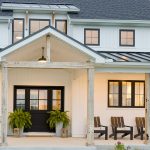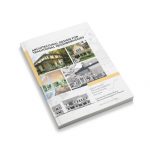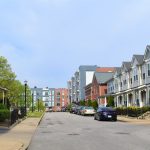The goal of every neighborhood is to offer a distinct style of life – a haven for the spirit of individuality and diversity as well unique character and charm to enrich the lives of all who live and work there. That’s why the versatility of today’s vinyl siding is an ideal match for New Urbanist and Traditional Neighborhood Design (TND) communities seeking to set themselves apart.
Creating Distinguished Character
Whether developers and designers are planning to recreate the look of a historic neighborhood – or looking to blend distinctive homes, shops and other mixed-use buildings in a contemporary, new way – vinyl siding can help bring the vision to life. Local character can be preserved, or influences from around the world can be reflected. In fact, no other exterior cladding material offers the variety of profiles, textures, colors, trim and accessories to meet virtually any architectural style.
Vinyl siding offers the widest array of profiles of any cladding, including traditional clapboard, Dutchlap, board & batten, shakes, scallops, beaded and more. Textures include both wood grain and smooth, which can replicate sanded and sealed wood, delivering the distinguished and attractive looks of the originals that inspired them.
Keeping Great Neighborhoods Affordable
Most TND and New Urbanist neighborhoods are defined by combining homes at various price points. With vinyl siding, trim and accessories, developers and designers can control costs without compromising quality for homes at all price levels.
Vinyl siding has by far the lowest average installed cost of any exterior cladding material, whether for new construction or renovation. Part of the reason is that vinyl siding goes up faster and doesn’t need painting. This initial value extends to the homeowners for years to come. Vinyl siding’s no-painting, low-maintenance features keep appreciating without using any additional natural resources.
Neighborhoods of Conscience
Many TND developments aim to address broader economic and environmental concerns. The value of vinyl siding helps ensure everyone can afford a home. As for the environment, take heart in the fact that vinyl siding is decidedly green.
For effective source reduction, vinyl siding uses minimal raw material in production – gaining strength instead through engineering and technological advancements. Nearly all plant scrap is reprocessed into new vinyl siding, resulting in almost zero waste. In addition, vinyl siding scores higher in environmental performance than the majority of other exterior cladding materials, including brick, in almost all criteria used to qualify for the USGBC LEED® for Home Environmentally Preferable Product Status.


